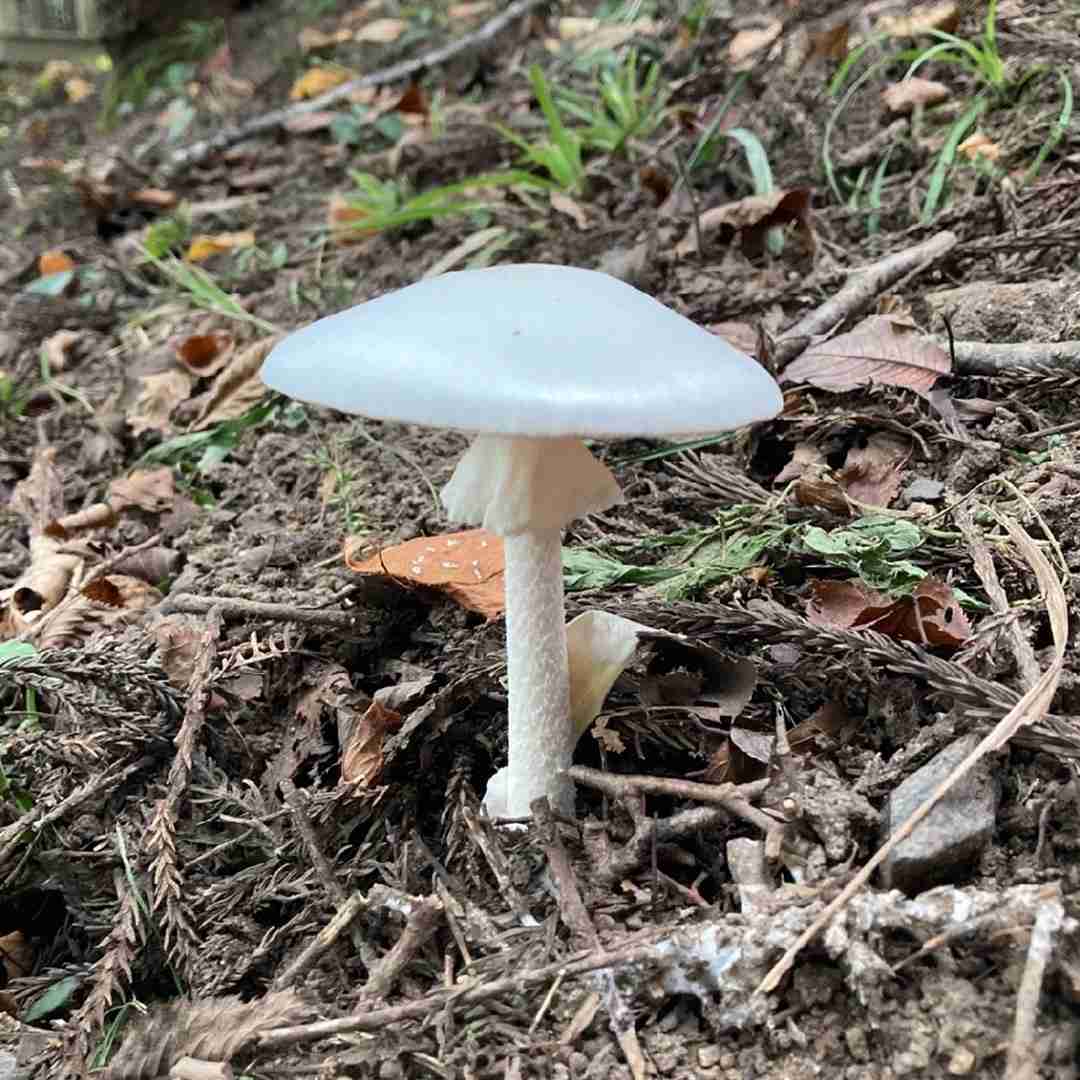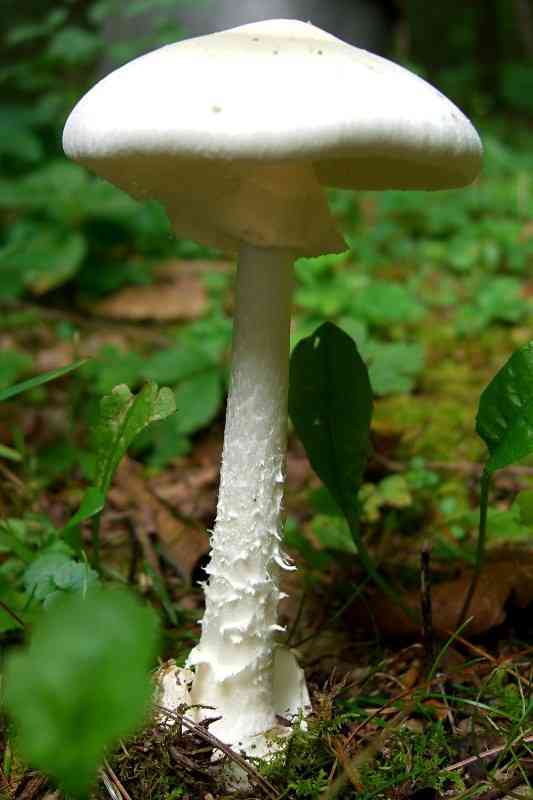
Guangzhou destroying angel
Amanita exitialis
A species of Amanita mushrooms.
The mushroom cap, measuring 4-7 cm (1.6-2.8 in) in diameter, starts egg-shaped, then becomes convex but flattens with age, sometimes showing a slight depression in the center. Its surface is smooth and white, though cream-colored in the middle. The cap's edge is without striations or partial veil remnants; its flesh is white. The gills, which are not attached to the stem, are white to whitish, tightly packed, and reach up to 5 mm in height. The lamellulae are long, tapering, abundant, and arranged in 2-3 layers. The stem is 7-9 cm (2.8-3.5 in) long and 0.5-1 cm (0.2-0.4 in) thick, generally cylindrical or slightly narrower towards the top, with a slightly expanded apex. Its surface is white to whitish, smooth, or occasionally covered with small, fibrous scales. The bulb at the stem's base is roughly spherical, 1-2 cm (0.4-0.8 in) wide. The volva is distinctly edged (limbate), thin, membranous, with a free limb up to 7 mm high, and both its surfaces are white. The ring is situated near the top of the stem, thin, membranous, white, and either persistent or may detach as the cap expands. All parts of the fruit body will turn yellow when exposed to a drop of dilute potassium hydroxide. The spores are typically spherical or nearly so, rarely broadly ellipsoid, measuring 9.5-12 by 9-11.5 µm. They are clear (hyaline) and colorless, amyloid (staining with Melzer's reagent), thin-walled, smooth, and possess a small apiculus. The spore-producing cells, called basidia, are 27-55 by 10-15 µm, club-shaped, and usually bear two spores (rarely one). They feature slender projections, sterigmata, measuring 5-7 µm long, which attach the spores.
Attributes of Guangzhou destroying angel
Scientific Classification of Guangzhou destroying angel
Toxicity and Edibility of Guangzhou destroying angel
Is Guangzhou destroying angel Toxic?
The Guangzhou destroying angel is a hepatotoxic fungus that initially causes symptoms such as abdominal cramps, nausea, weakness, and vomiting, and may lead to circulatory failure. As the illness progresses, it can result in severe health complications, including heart and liver damage. It is essential to identify the Guangzhou destroying angel by its unique physical characteristics to distinguish it from harmless mushrooms and prevent accidental ingestion.


